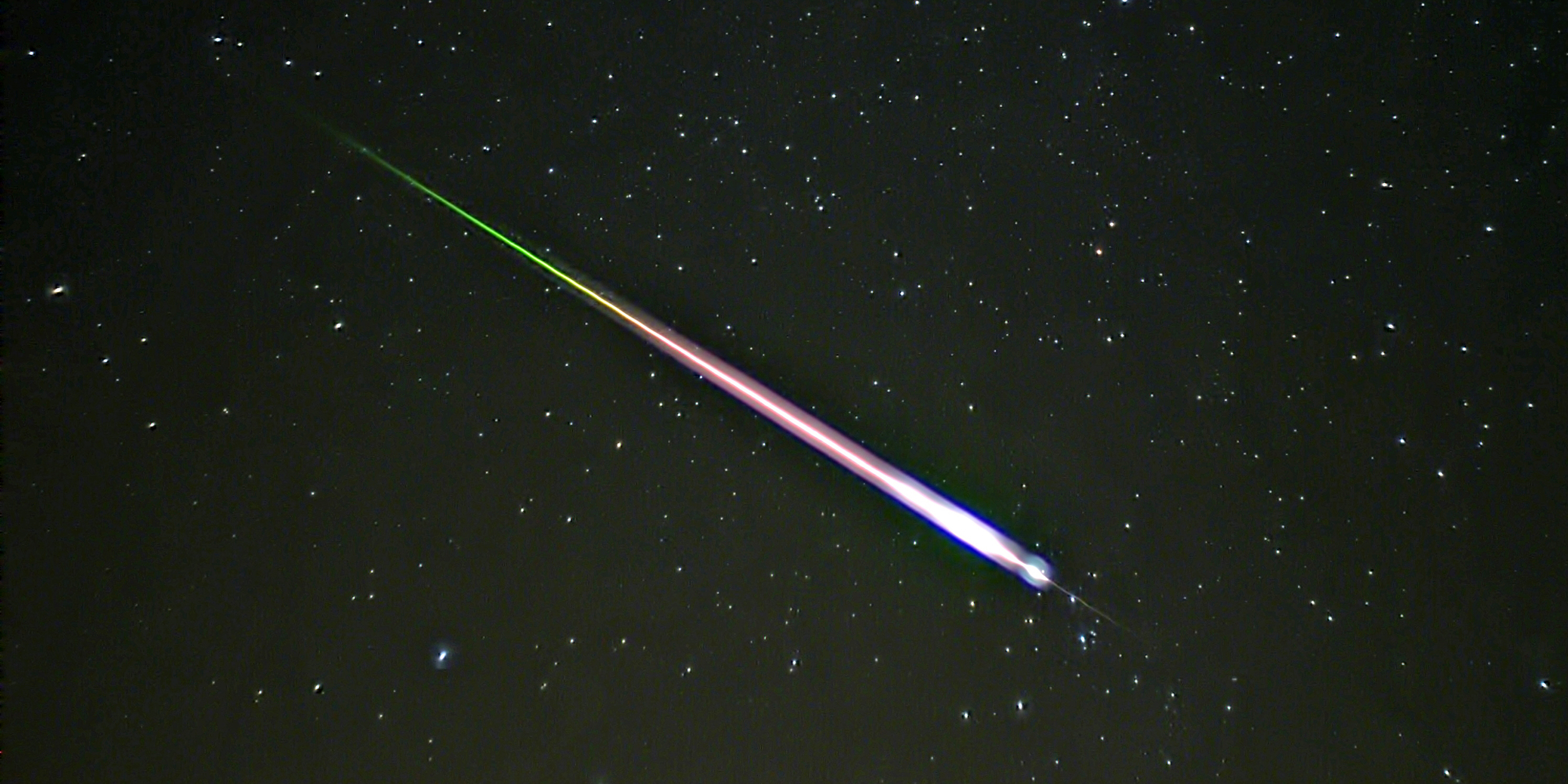Originally published 7 December 1998
The 11 p.m. weather report said there might be breaks in the clouds before dawn.
That was enough to make a few of us decide to camp out on the deck of the college observatory. We dragged out lounge chairs, wrapped up in blankets, and waited — for the much-anticipated Leonid meteor storm.
It was a long, cold, damp night. Chris snored away as if he were home in bed. John and I passed in and out of sleep, tossing and turning in our discomfort, uncertain exactly why we were putting ourselves through this misery.
We knew what we hoped for. The Leonids are an annual meteor shower of modest activity, but every 33 years they put on a fabulous show, and this was the big year.
The meteors are fragments of Comet Temple-Tuttle, which visits the inner solar system every 33 years on an orbit that takes it close to the orbit of the Earth. It is just after the comet has passed by that we are likely to experience a meteor storm, as we plunge through the stream of debris that trails the comet.
The last time Comet Temple-Tuttle came by, in 1966, observers in some parts of the world saw tens of thousands of meteors per hour, a once-in-a-lifetime feast of celestial fireworks.
But we knew the odds were against us. The astronomers who calculate these things had predicted that China would have the best of it. And the satellite photograph on the 11 o’clock news showed clouds ominously backed up all the way to Lake Erie.
But we were game, and even when the drizzle began we pulled the blankets tighter around us and kept our eye on the western horizon, from where any clearance would come.
But it didn’t clear, and when the first hint of dawn appeared in the east, we woke Chris, gathered our blankets, and made our ways home without having seen a single “shooting star.”
We saw no Leonids, nor did we hear one booming up there above the clouds.
In 1833, people not only saw a spectacular Leonid storm — up to 150,000 meteors per hour — but they also reported snapping, crackling, and popping noises, and occasional booms like cannon fire.
According to astronomer Martin Beech, writing in the July 1998 Astronomical Journal, these are probably “electrophonic sounds,” created by very-low-frequency radio waves generated by the interaction of a vaporizing meteoroid with the Earth’s magnetic field.
Only big and bright fireballs are likely to produce such noises, says Beech, objects bigger than 3 feet across and as bright as a nearly full moon. Many spectacular fireballs were seen during this year’s Leonid event — by observers with clearer skies than we had — but I know of no reports of sounds.
With or without sound, in storms or showers, meteors are of keen interest to astronomers: They bear clues to the origin of the solar system, and perhaps even to the origin of life.
Nearly 100 tons of meteoric material from space smash into the Earth’s atmosphere each day, mostly in the form of tiny particles that are vaporized by friction with the air. Larger objects can survive passage through the atmosphere and strike the ground. A meteorite on the ground is a scientific bonanza.
This past September, a group of European scientists reported finding meteor fragments incorporated in 1.4 billion-year-old sandstone from Finland. These are far older than any meteoric material yet discovered on Earth.
Amazingly, even these ancient particles of cosmic dust are goldmines of information about the history of the solar system during that long-ago epoch.
I recounted these tales of celestial noises and billion-year-old meteorites to John as we tossed and turned during our cloudy night on the observatory deck. It helped pass the time.
But the big question remains: Why had we endured the night in cloud and drizzle?
I’d give the same answer the naturalist Henry Beston gave when asked why he spent a year on the Nauset dunes of Cape Cod: What we sought was a deeper sense that the creation is still going on.
“Creation is here and now,” wrote Beston in The Outermost House. “So near is man to the creative pageant, so much a part is he of the endless and incredible experiment, that any glimpse he may have will be but the revelation of a moment, a solitary note heard in a symphony thundering through…time.”
What we sought on the observatory deck was a glimpse of that incredible experiment, a note of the symphony of continuing creation.
Up there above the clouds fragments of a comet made swan dives into the Earth’s atmosphere, flaring briefly, scattering stardust — anointing the planet with the elements of life.
We were disappointed that we didn’t see (or hear) those bits of comet, but not so disappointed that we wouldn’t try again. Even the cold and drizzle were part of the music of the here and now.



